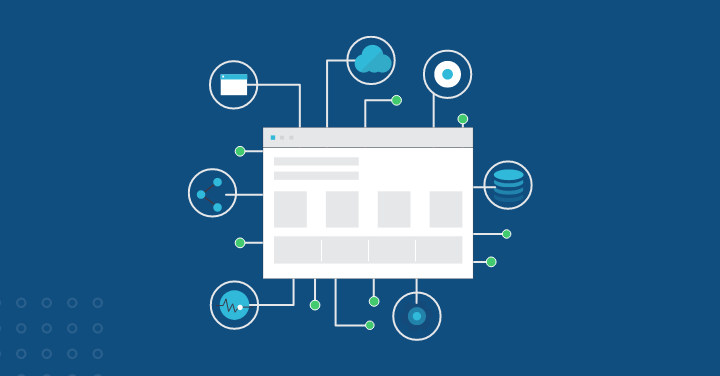According to Wired, around 67% of web servers worldwide use Linux OS, and the main reason behind using Linux OS is as follows:
- It is powerful
- It is stable
- It is secure
- Built on open source
- Infinitely customizable
Linux comes with better security, but still, it is susceptible to malware attacks because newly discovered vulnerabilities, you require Linux patching for your organization to witness exceptional security.
The importance of Linux patching is tremendous for any organization.
Now, you might be looking for more thorough information on Linux Patch Management to help you secure your organization.
In this blog post, we will share a detailed overview of Linux Patch Management and its best practices so that you get the best understanding.
Why is Patch Management important?
We already discussed the importance of patch management for your organization but let me explain all those points with a real-time example:
In the USA, the FBI and NSA released a security alert about Russian malware, Drovorub.
This malware only attacks those Linux distributions running the Linux 3.6.x kernel or earlier. And the surprising part here is that Linux 3.6 Kernal was released eight years ago.
So, the system administrator becomes the culprit here if they are using an 8-year-old version, which will cause the malware attack.
Let’s take another situation where your organization installed patch management software, and the above-discussed things happen.
Patch management will be integral in regularly updating your software and applications.
Effective patch management can efficiently safeguard the organization from such malware attacks.
Linux Patch Management Best Practices
When patching Linux Systems, it is crucial to understand the standard best practices to accomplish exceptional outcomes.
To get the most out of best practices, it is essential to establish a standard procedure for effective patch management.
A robust patch management strategy will keep your organization safe and secure.
Here are some industry-standard best practices for Linux Patch Management.
Create a patch management policy
A clear patch management policy outlining the process for identifying, testing, and implementing patches is essential.
This policy should also include guidelines for prioritizing patches based on the severity of the vulnerabilities they address and the potential impact on the organization.
Identify and assess patches
Regularly review available patches and assess their importance and relevance to your organization.
This may involve reviewing vendor-provided security bulletins or subscribing to a third-party security notification service.
Test patches
Before deploying Linux patches, it is vital to test them in a staging or test environment to ensure they do not cause any issues with existing systems or applications.
This can help prevent unplanned downtime or other negative impacts on production systems.
Deploy patches in a controlled manner
When deploying patches, it is essential to do so in a controlled manner to minimize the risk of issues.
This may involve deploying patches to a subset of systems first and monitoring them for any issues before rolling them out to the rest of the organization.
Monitor and review patch management processes
Regularly review and monitor them to ensure they are effective and identify any areas for improvement.
This may involve tracking the time it takes to deploy patches, the success rate of patch deployments, and the number of vulnerabilities that patches address.
Automate Linux Patch Management
It is time-consuming and tedious to patch manually when you have thousands of devices, but you can quickly solve this through automation.
There is a list of tools and strategies that can be opted for by organizations to automate the patch management process on a Linux system.
In addition, there are also specialized patch management tools available for Linux systems, such as Motadata ServiceOps Patch Manager, which can automate the process of identifying, downloading, and installing patches and updates.
Motadata ServiceOps Patch Manager – Your Defense Against Software Vulnerabilities
Motadata ServiceOps Patch Manager is your one-stop destination for exceptional patch management.
Our Patch management software can help simplify endpoint management by automating the process of identifying and installing software updates, also known as patches.
These patches can include security updates, bug fixes, and feature enhancements and are typically released by software vendors to address vulnerabilities or improve the functionality of their products.
By using Motadata patch management software, organizations can:
- Identify which systems and applications need updates
- Schedule and automate the installation of patches
- Monitor patch deployment to ensure it is successful
- Generate reports to track patching progress and compliance
This can help organizations save time and reduce the risk of security vulnerabilities, as unpatched systems and applications can be a target for cyber attackers.
Patch management software can also help organizations meet regulatory and compliance requirements, as many industries have guidelines around software patching.
So, keep your systems and software safe and secure to witness exceptional productivity and business growth with Motadata ServiceOps Patch Manager.
Conclusion
In conclusion, effective patch management is essential to maintaining a Linux system’s security and stability.
Some best practices for patch management include:
- Keep the system up-to-date by regularly installing security patches and updates.
- Consider using a patch management tool to help with the process of identifying and applying patches.
- Establish a testing and deployment process to ensure patches are thoroughly tested before being rolled out to production systems.
- Have a rollback plan in place in case a patch causes an issue.
- Monitor the system for any potential issues after patching and address them promptly.
By following these best practices, you can ensure that your Linux system is well-maintained and secure.






